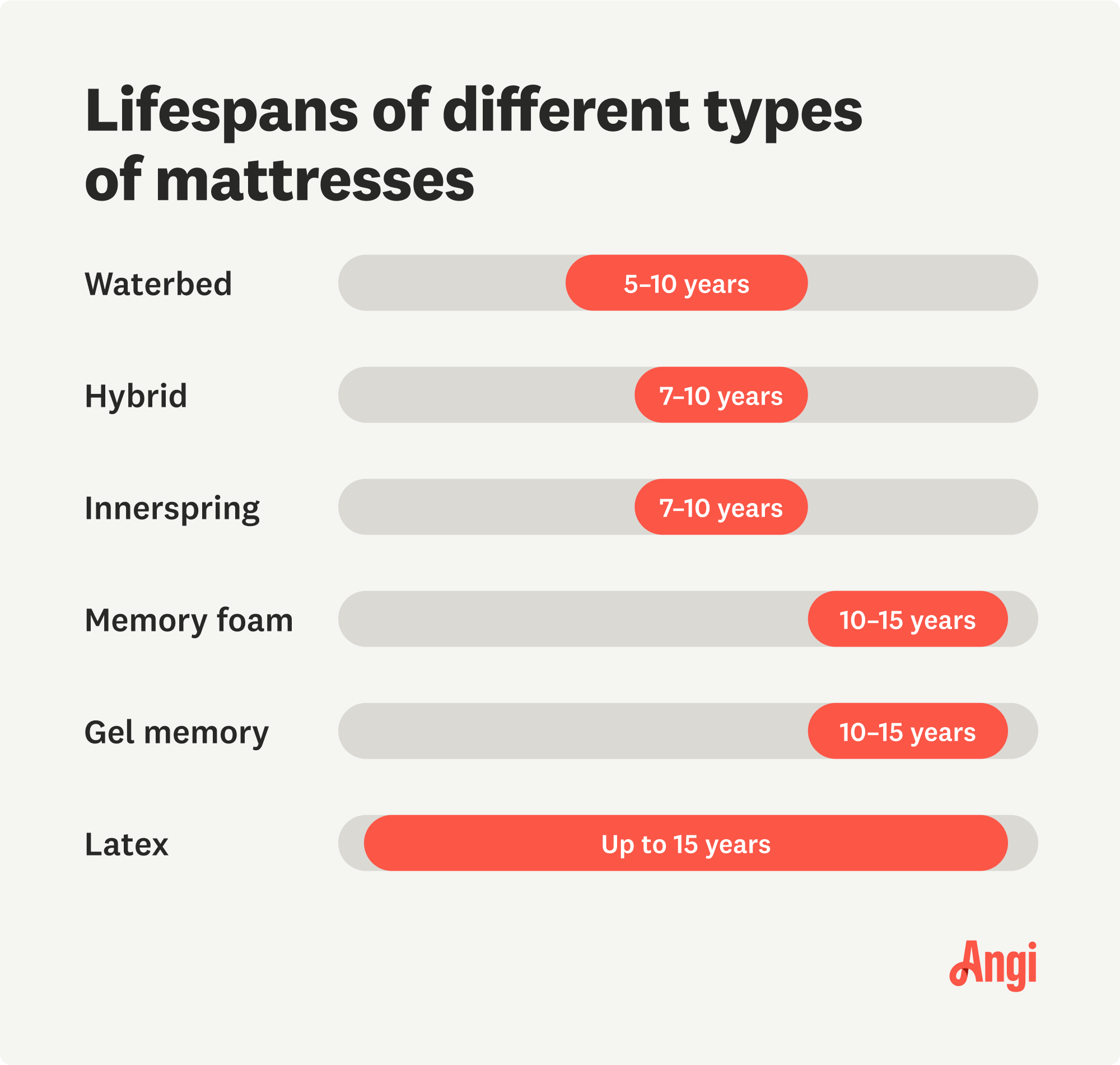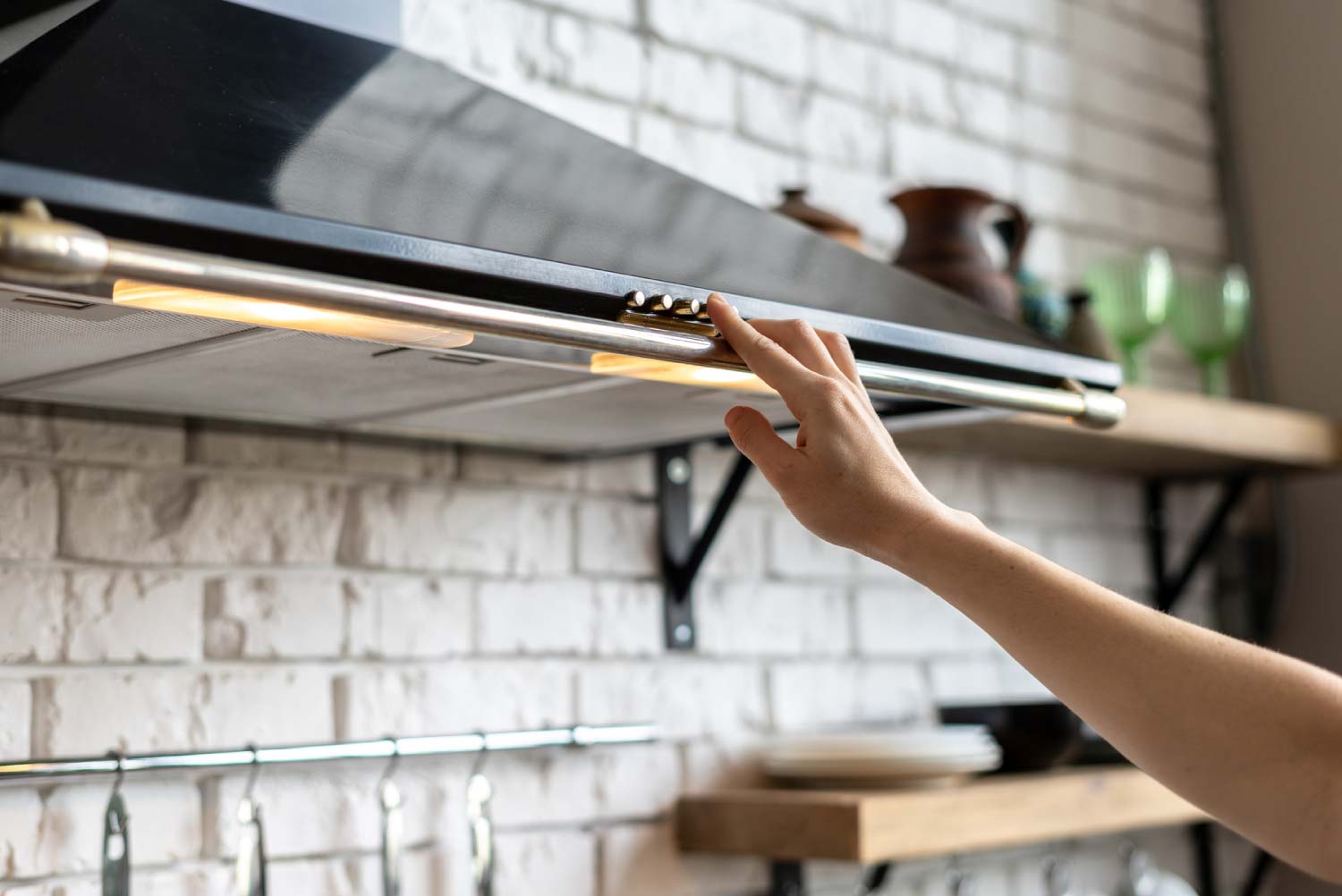
Call in the professionals when your delicate drapes need a deep clean. Let's take a look at drapery cleaning costs and which factors can sway the price tag.
It’s hard to sleep tight when your old bed bites


Most mattresses last an average of seven to 10 years, though higher quality ones can last longer.
The material your mattress is made of and regular maintenance dictate its lifespan.
If your mattress shows obvious signs of aging, such as lumps, sagging, or squeaks, it’s time for a new one.
If you’ve been experiencing weeks of bad sleep but haven’t found the source of your trouble, look beneath you—your old mattress could be to blame. Over time, the materials in your mattress degrade, making it hard to wake up feeling refreshed and sometimes even triggering allergy and asthma flare-ups. Learn how often you should replace your mattress and how to maintain your new one so it gifts you many years of good rest.

Different mattress materials have different lifespans. How well you take care of what’s under your sheets will impact long you can keep your mattress before your back starts begging for a replacement.
Innerspring mattresses have inner coils that distribute your body weight evenly on top of the mattress. Usually paired with a pillow-top or memory foam topper, these mattresses keep things cushy and comfortable for years—about seven to 10 years, on average. Innerspring varieties sometimes last longer if they are made from high-quality materials and are double-sided, which allows you to flip them periodically to prevent excessive wear on one side.
Whether natural or synthetic foam, latex mattresses boast lifespans of about 15 years. To get the most time with your latex mattress, you should rotate it yearly to prevent dents and sagging.
Made from polyurethane foam, memory foam mattresses typically last between 10 and 15 years That said, the biggest factor influencing your memory foam mattress’ lifespan is its foam make-up and the other materials it’s mixed with. Higher-quality foam concoctions last even longer. Rotate these mattresses every six months to extend their longevity.
Gel memory mattresses have a memory foam embedded with gel beads, which help keep the mattress cool. Like traditional memory foam mattresses, you can expect gel memory mattresses to last 10 to 15 years with regular rotation.
Hybrid mattresses blend innerspring construction with a foam top. On average, these kinds of mattresses will last seven to 10 years. Most warranties for hybrid mattresses cover 10 years of use.
Waterbed mattresses are available as either hard-side or soft-side. Hard-side varieties are traditional waterbed mattresses made from vinyl, while soft-side varieties are covered by a foam shell and look like other mattresses on the market. Typically, waterbed mattresses last five to 10 years.

If you don’t know how old your mattress is, look for these common red flags indicating it’s time for a new one.
Obvious signs of wear and tear include sagging, lumps, coils poking out, or other indications of age. You might also hear the coils when you lay down on top of it; this is another clue that the materials of your mattress are wearing thin and you should purchase a new one.
Your mattress is meant to support and rejuvenate your body while you sleep. If you frequently wake up with aches and pains, your mattress is not doing its job correctly, and you should replace it.
Weight fluctuations are a normal part of life, but extreme changes might mean you need to swap your mattress for one that better suits your body. Heavier people will need more support than lighter people.
Dust mites and allergens love to collect on mattresses. While cleaning and vacuuming can help, nose-tickling materials can build up on older mattresses to such a degree that you might notice an increase in your allergies or asthma. If that’s the case, take care of your health and replace your mattress.
Newer, higher-quality mattresses resist and reduce motion transfer; if you wake up every time your partner turns over or gets in and out of bed, consider a new mattress.
Mattresses are expensive items, often costing thousands of dollars. Maintain your existing or newly-purchased mattress with these tips to make it last as long as possible.
To make your mattress last longer, recall that age-old nursery rhyme—you know, the one with the monkeys. Letting kids (and pets) jump all over your mattress is not only a safety hazard; it can cause unwanted and premature wear and tear.
Mattress protectors keep your mattress safe from spills, stains, sweat, and dust mites. Modern mattress protectors fit around your mattress and close with a zipper, therefore are easily removed for cleaning.
Mattress bases are either box springs or more supportive platforms; make sure to research which is best for your type of mattress and its materials. The manufacturer should have recommendations.
Every six months, remove your sheets and inspect your mattress for signs of aging like sagging or lumps. Also, look at your box springs or foundation to ensure it still provides the right amount of support.
If you have a two-sided mattress, flipping it every six or 12 months can help distribute the wear. Most modern pillow top and memory foam mattresses are one-sided and don’t need to be flipped, but they could still benefit from a quick rotation every 3 to 6 months to extend their lifespan.
We’re guilty of eating in bed, too, and accidents happen. If your dog jumps on the bed and spills your morning coffee, for example, clean your soiled mattress immediately and correctly to prevent any degradation of materials.
If you’ve finally decided to sub your old mattress from 1999 to a newer one, make sure you dispose of it properly. You can recycle it yourself by breaking down the parts and confirming local recycling centers accept those materials, or try using a mattress recycling service, which will often come collect the mattress, too.
To simply have your mattress hauled away as trash, contact a local junk removal service or see if your new mattress company will have your old one removed for a small fee. Fees for junk removal vary, but a smaller job (like a mattress) will run about $50 to $150.
From average costs to expert advice, get all the answers you need to get your job done.

Call in the professionals when your delicate drapes need a deep clean. Let's take a look at drapery cleaning costs and which factors can sway the price tag.

Garage clean-out costs vary considerably depending on the garage size, the waste type and amount, and how much work you do yourself.

Discover the average kitchen hood cleaning cost, what impacts pricing, and how to budget for this essential maintenance. Get tips to save and keep your kitchen safe.

Choosing the right cleaner is essential to keeping natural stone surfaces in good condition. Find out more about pH neutral cleaners for stone surfaces.

If your kitchen or bathroom tiles need some TLC, consider hiring a pro to help. Here are the tile and grout cleaning questions to ask before starting.

Steam cleaning can be an effective way to disinfect your home. We explain what steam cleaning is, what you can steam clean in your home, and when to avoid it.